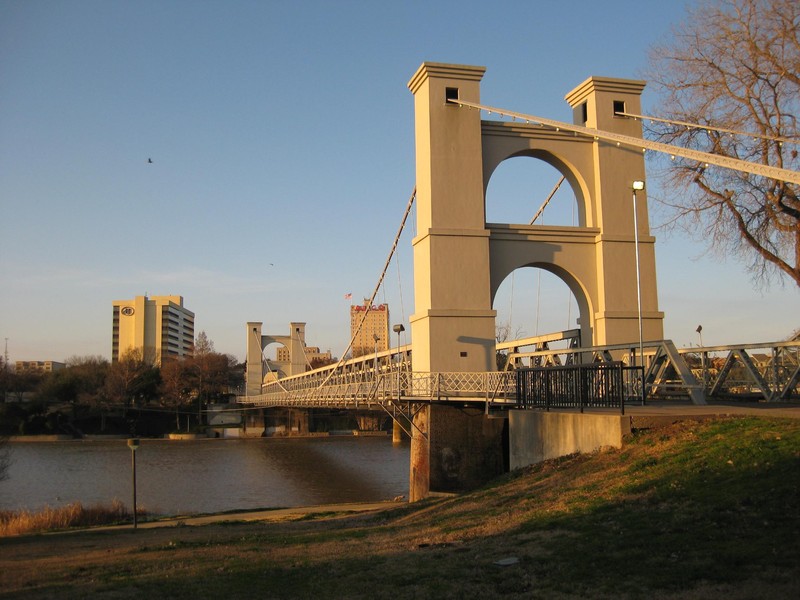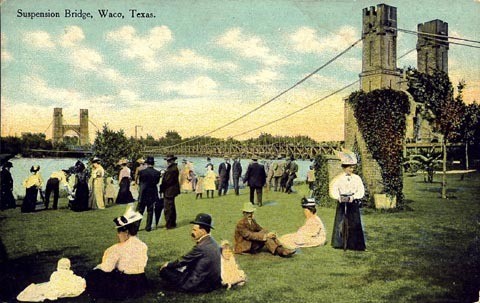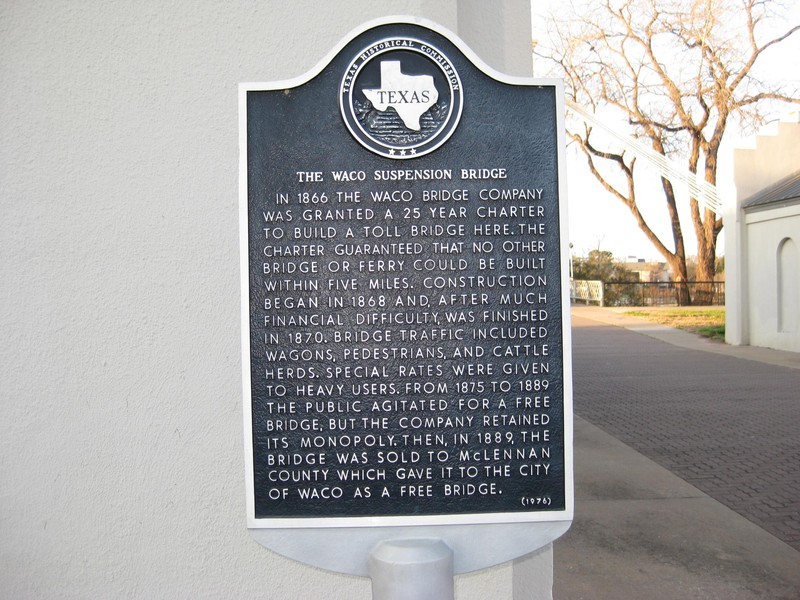The Waco Suspension Bridge
Introduction
Text-to-speech Audio
Images
Waco Suspension Bridge

Waco Suspension Bridge in 1912

Waco Suspension Bridge Marker

Backstory and Context
Text-to-speech Audio
History of the Waco Suspension Bridge
In the years following the Civil War, Waco community leaders and businessmen were searching for ways to stimulate the local economy and empower the town. Before 1870, cattle drivers traveling between the Texas and Kansas
In 1866, Joseph Warren Speight introduced a suspension bridge project aimed at economic stimulation, and that same year, Texas legislature incorporated the Waco Bridge Company, giving them exclusive bridge rights for any traffic crossing the Brazos within five miles of Waco.
The Waco Bridge Project and its president, John T. Flint, hired Thomas M. Griffith of New York to be the project’s civil engineer, and Flint also commissioned cables and
Supplies for the bridge came from Galveston, Texas, (about 212 miles away), which were then ferried on a steamer to
In 1889, McLennan County purchased the bridge, removed all tolls, and sold the bridge to the City of Waco for $1. Waco would then take responsibility for all maintenance of the bridge. The popularity of cars mandated a massive reconstruction project in 1913 and 1914, and by 1971, the Texas historical committee retired the bridge and made it a pedestrian walkway, which is still highly popular today.2
Cite This Entry
Newcomer, Daniel. "The Waco Suspension Bridge." Clio: Your Guide to History. July 18, 2015. Accessed April 12, 2025. https://theclio.com/tour/916/13/reverse

